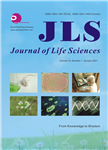The Effect of Weather and Agronomic Practice on Deoxynivalenol Mycotoxin in Durum Wheat
The Effect of Weather and Agronomic Practice on Deoxynivalenol Mycotoxin in Durum Wheat作者机构:Department of Animal Production and Food Scienee University of Zaragoza Zaragoza 50013 Spain Fundaci6n Parque Cientifico Tecnol6gico Aula Dei (PCTAD) Zaragoza 50059 Spain Agri-Food Research and Technology Center (CITA) Zaragoza 50059 Spain
出 版 物:《Journal of Life Sciences》 (生命科学(英文版))
年 卷 期:2012年第6卷第5期
页 面:513-517页
学科分类:09[农学] 0903[农学-农业资源与环境] 0901[农学-作物学]
主 题:脱氧雪腐镰刀菌烯醇 硬粒小麦 霉菌毒素 农艺措施 天气条件 食品安全问题 农业生产条件 农业系统
摘 要:Deoxynivalenol (DON) produced by Fusarium graminearum and F. culmorum in durum wheat (Triticum turgidum L. var. durum) is an important food safety issue for the cereal chain. A number of agronomic practices are known to affect the infection and mycotoxin production by these Fusarium species in cereal grains. A field study was conducted to compare the natural occurrence of DON in durum wheat grown under conventional (n = 67 samples) and organic (n = 50) farming conditions during two consecutive crop years. DON mean levels were 95 and 194 μg/kg in conventional and organic durum wheat, respectively. The incidence and levels of DON were higher in the second crop year due to higher rainfall ( 100 mm) during flowering. Overall, organically managed farming system may provide some reduction in DON levels in durum wheat, which could be attributable to the lower intensity of cultivation in addition to the different system of cropping rotation. However, favourable weather conditions are likely to be more important for DON contamination than crop system.



